The 7 Best Fly Tying Hooks: For Dry Fly, Nymphs, and Streamers
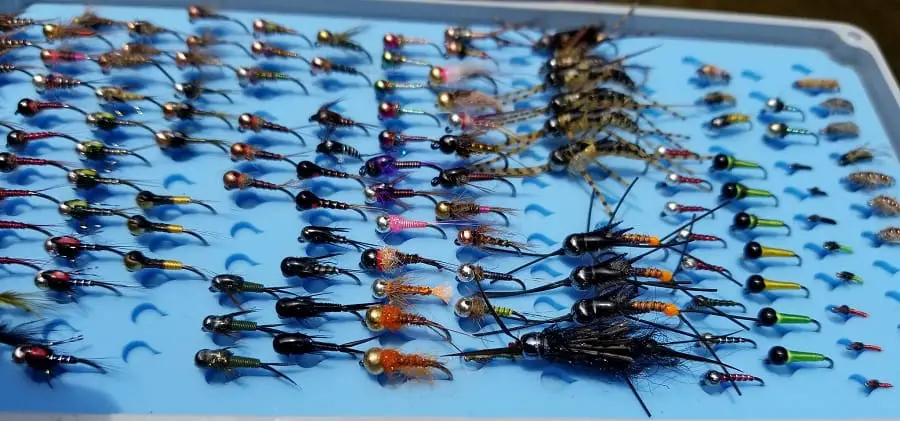
As a fishing guide and a commercial fly tier who has been tying flies for over 30 years. I’m going to be brutally honest about tying hooks.
First, it doesn’t matter if a fly pattern calls for a specific hook; find something close and use it. You do not need ten variations of dry fly hooks, streamer hooks, or nymph hooks. One or two variations of good-quality hooks are all you need.
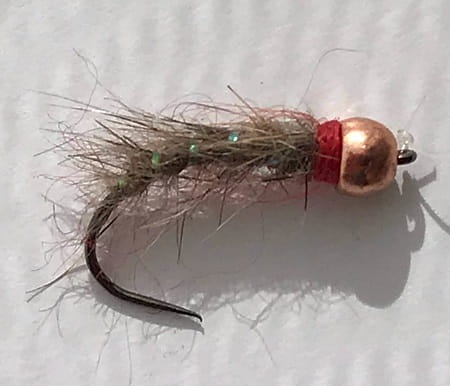
Second, bad hooks can bend, break, and even decrease hooking ability. Therefore, use good-quality hooks.
The best fly tying hooks will be thin but strong, have a gap size that will enable better hookups, have a thin and very sharp point, and will be the right shape and size for the fly pattern you want to tie.
You also want a fly hook that can handle the size of fish without breaking or bending.
We may make a small commission from some of the links on this website, which is at no cost to you. I appreciate your support. Learn More
What Are The Best Fly Tying Hooks?
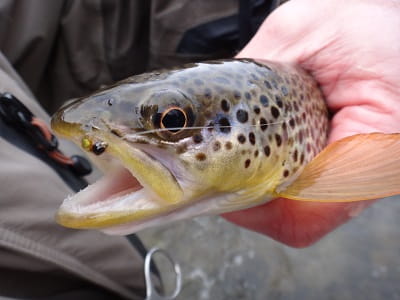
The best hooks for fly tying come from reputable brands that use high-quality metal wire, excel in wire technology, have extremely sharp points, and are proven by guides and anglers not to break.
In my opinion, the best fly-tying hooks I have tested come from:
Other quality brands I use and would recommend are:
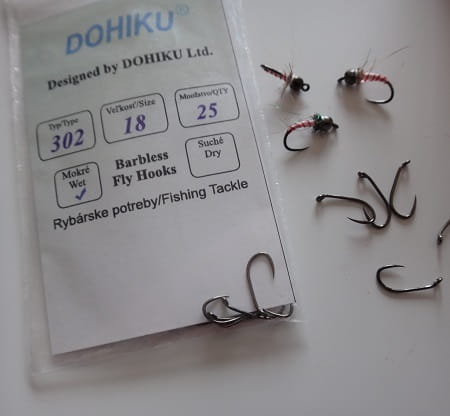
- Fulling Mill
- Firehole Sticks
These are the hooks you will see competition fly anglers and top guides using.
If you want a great hook that will provide more hookups and one you can rely on, stick with these proven companies.
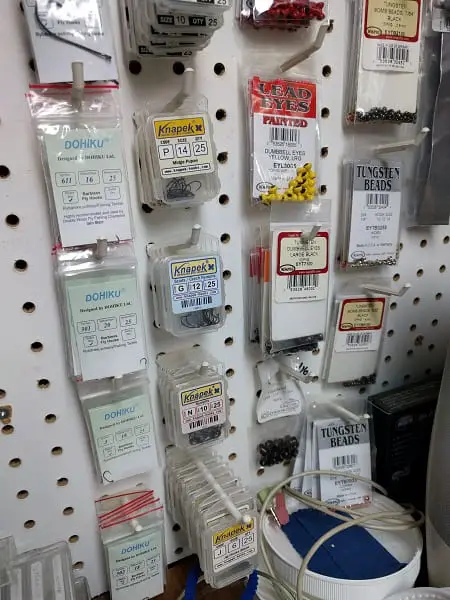
A fly hook includes elements such as the gape, point, shank, eye, bend, throat, and thickness.
The fly hook you use will depend on the fly pattern you want to tie, which means different fly patterns will require a different shape, size, and strength.
How to Buy the Best Fly Tying Hooks
To find the ideal fly tying hook, consider factors such as;
- Type Of Hook: You want to pay attention to the material of the hook since you want saltwater hooks when fishing in salt water, but not when fishing a local freshwater trout stream. A standard trout hook with a typical bronze coating will rust and be destroyed by the salt water after only 1 or 2 uses.
- Regulations: your local fishing regulations may require or limit hooks by size or type. In some areas, barbed flies are not permitted.
- Personal Preference: your personal preference matters; guys like me prefer certain hooks, and I prefer and use barbless hooks 95% of the time or pinch the barb in the vise with fly tying tool or pliers. Some guys also prefer a certain shape or hook color.
- Quality and Reputation: stick with known quality brands that fit within your budget.
- Chemically Sharpened: Chemically sharpened hooks are known to be the sharpest hooks available, and sharp hooks improve hooking percentage.
- Size: buy your fly hook based on the fly pattern and the size of the natural fly you are trying to imitate. Meaning, if all the March Brown mayflies on your local river are a size 14, then tie on a size 14. I will discuss sizes in more detail below.
- Species Specific: Buy species-specific hooks, which means if you are fishing for trout, buy trout fly hooks. But, if you are fishing for steelhead, salmon, bass, pike, musky carp, or other big species, those little trout hooks will likely bend or break.
What Makes a Good Fly Tying Hook
The preferred choice of good anglers are hooks that are sharp, penetrate well, hold well, and don’t bend or break even with flies in smaller sizes.
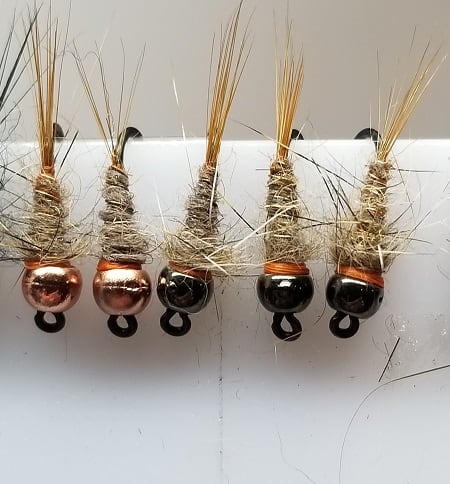
Fly-tying hooks are made from metal wire that is bent to shape, and there are dozens of shapes and types.
A great hook for fly tying is one that is made from a hardened tempered metal that is very strong for its size and shape and has a chemically sharpened point.
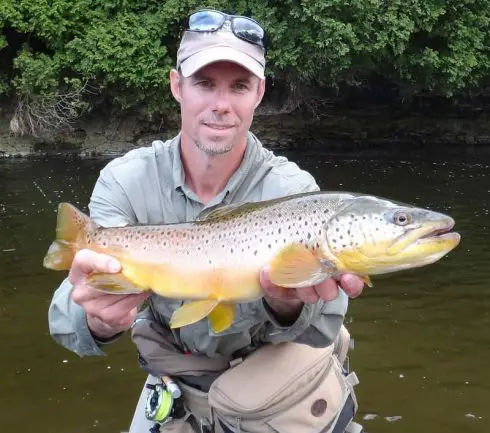
It also needs to be as thin as possible so it’s not seen by the fish while still maintaining its strength. Thin hooks also enables the fly to drift more naturally.
A good fly hook matches your specific needs and preferences. It should be made from high-quality materials, have a reliable construction, and offer the right size and shape for the type of fly you’re tying.
Types of Hooks Required For Fly Tying
The type of hook you need depends on the fly patterns you’re tying. You will need a different shape, size, and length for some fly patterns.
Some common hook categories include:
- Hooks for Dry Flies
- Hooks for Nymphs
- Hooks for Streamers
- Hooks for Wet Flies
- Long Shank Hooks
- Scud Hooks
- Grub Hooks
- Egg Hooks
- Saltwater Hooks
Best Dry Fly Hook
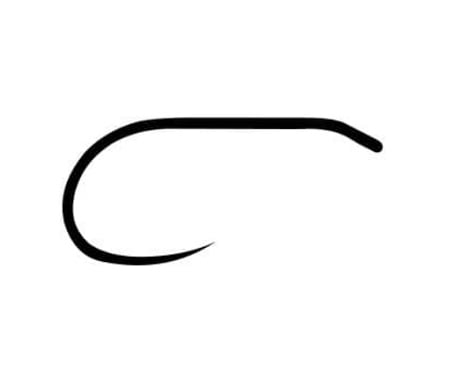
When it comes to tying dry flies and dry fly fishing, it’s all about finding that perfect balance between the hook’s weight, durability, and design to ensure the fly stays afloat while still being effective at hooking the fish.
After tying and fishing thousands of dry flies, I’ve found that the traditional standard dry fly hook is not always the best hook. These are things I now look for in dry fly hooks.
For dry fly hooks, you’ll want to go for lightweight hooks with fine wire construction that will help your fly to float higher and for longer.
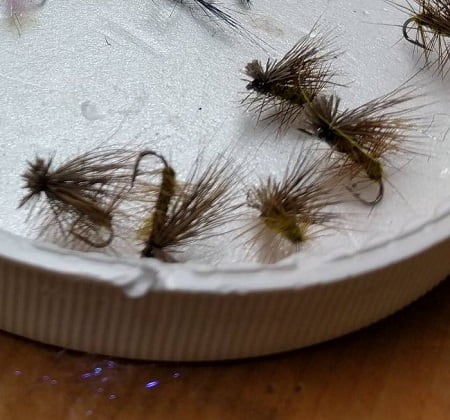
You also want to use a straight shank dry fly hook, with a wider gap. A wide gap provides a better-hooking percentage, especially on heavily hackled or bushy-type flies.
Some dry fly hooks will come as 1x long or 2x long, but often, this means you get the right length but with less of a gap so I do not recommend them.
Hook sizes can vary, but generally, you’ll find that sizes 10 to 22 work well for most dry fly patterns.
The correct hook matters and a tip for you is when fishing smaller flies, a medium weight or thicker wire hook is often best to prevent the hook from bending with large fish.
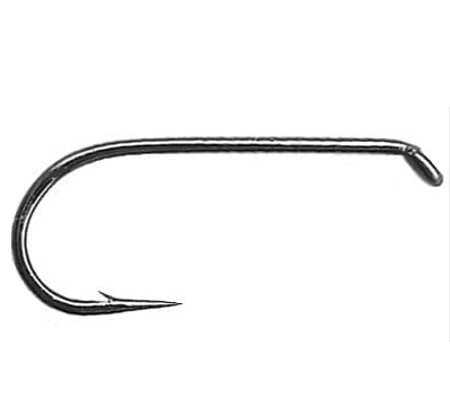
With a big fly on the surface, you want a thin wire hook so it doesn’t weigh the fly down and sink it.
Hook Eye: Make sure to consider hooks with a down-eye or straight-eye design, as they allow for easier tippet attachment and give the fly a more natural presentation. Most down-eye hooks are about a 45-degree angle, but anything from a 25 to 45 degrees is generally good.
Unless you are skating flies like buzzers and bomber flies like those used for Atlantic salmon, an up-eye hook is not used often.
A few dry fly hook models that I use, starting with my favorite are:
- Hanak Competition 100BL Hooks – My favorite competition style dry fly hook.
- Tiemco TMC100 or the barbless Tiemco 100BL – My favorite standard dry fly hook.
- Daiichi 1170 – Stronger than most other brands’ standard dry fly hook with a mini barb for better hook penetration.
- Daiichi wide gape1100 – good for very small flies due to the slightly wider gape and bigger eye.
- Ahrex FW500 Dry Fly Hooks
- Ahrex FW524 Super Dry Hooks – for Klinkhammer-style dry flies
Best Nymph Hook
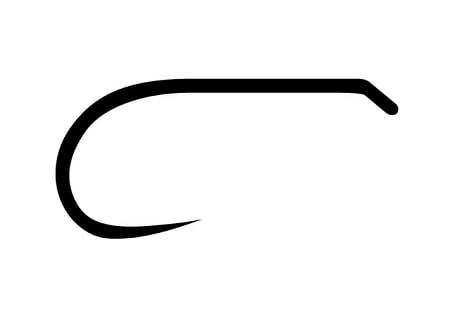
I may be a little different because I like to tie my nymphs on both straight nymph hooks and on curved scud or sedge hooks.
I’ve seen plenty of nymphs drifting down the river, and they are not always straight bodied, so a slight curve is OK.
Traditional or old-school nymph hooks were designed with a closer gap, so I rarely use and recommend them. There is a reason the top competition anglers in the world all prefer wider gap competition style hooks.
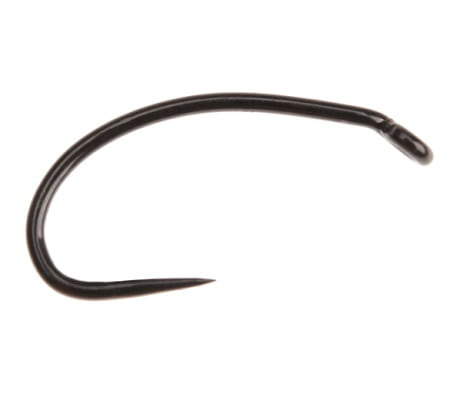
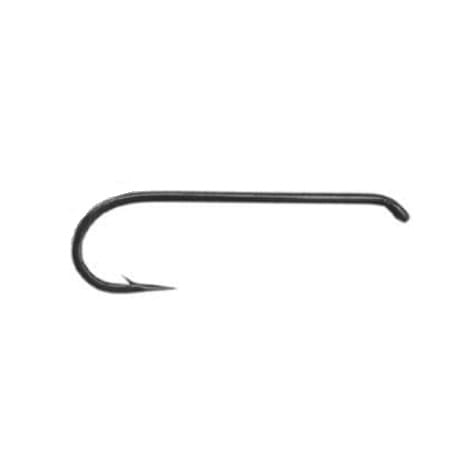
I would say 70% of my nymphs are tied on straight hook shank hooks like the:
- Tiemco TMC 113BLH Nymph Fly Hooks
- Ahrex FW540 Curved Nymph Hooks
- Hanak Competition 290BL Nymph/Wet Hooks
I do not like the shape of hooks like the curved Nymph Long Hooks seen below simply because of the small hook gap, which I have found to miss a lot of fish. Instead, stick with hooks with a wide hook gap.
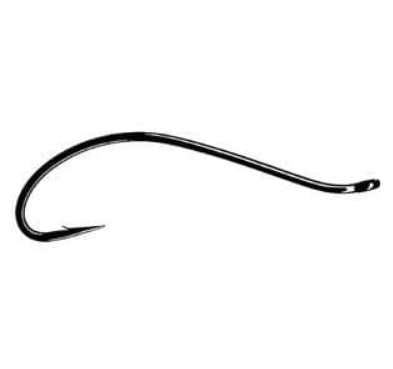
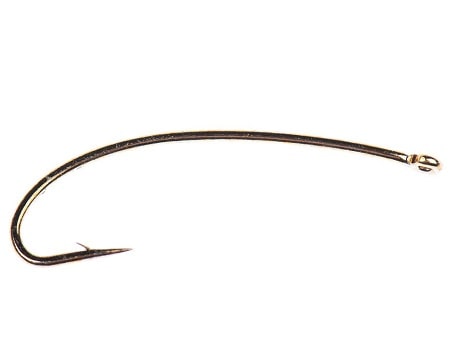
Scuds, Caddis Pupae, Grubs, Isopods, Shrimps
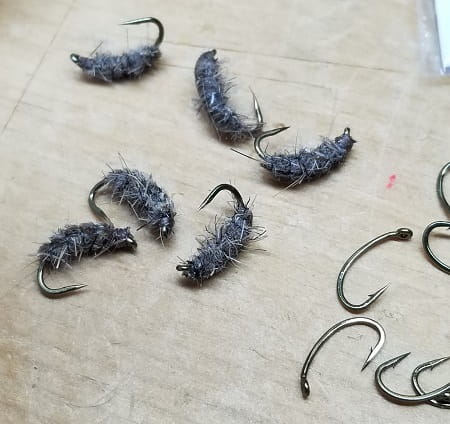
Many streams have caddis, scuds, and isopods, and in my area, scuds account for a lot of the big trout my clients land each year.
For these nymph patterns, a scud hook or a sedge hook will work well.
These hooks are strong even in smaller sizes and are readily available in the market.
- Tiemco TMC 2488H Heavy Nymph Fly Hooks – I use these a lot, and I use them when I need superior strength with my tiny flies in sizes 16 to 22. I’ve landed 26-inch brown trout on size 20 with these extra-strong hooks.
- Tiemco TMC 2457 Shrimp And Caddis Pupae Hooks – The name says it all.
- Tiemco TMC 2487BL Barbless Shrimp And Caddis Pupae Hooks
Jig Fly Hooks
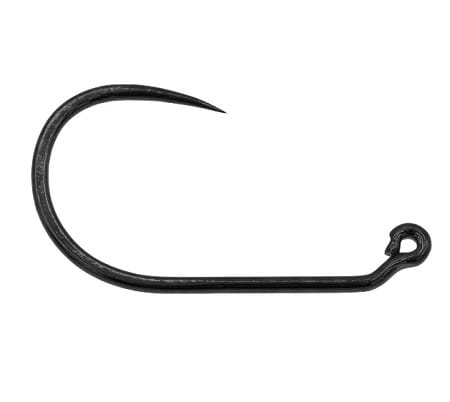
In recent years more and more anglers are tying their nymphs on jig fly hooks.
The advantage to using a jig fly hook is that the hook point rides up which is great for dragging flies across the bottom and for preventing fewer snags.
I’ve been using competition-style jig fly hooks for about five years, and I find the wider gap and slight downward hook point hooks and holds the fish better than standard jig hooks.
In fact, if it works for the pattern, I now prefer to tie most of my nymphs on jig hooks.
Jig hooks to consider are:
- Hanak’s Competition 470BL Jig Wave Hook
- Hanak’s Competition 400BL Jig Classic Hook
- TIEMCO TMC 403BLJ BARBLESS JIG NYMPH HOOKS
Streamer Fly Hooks
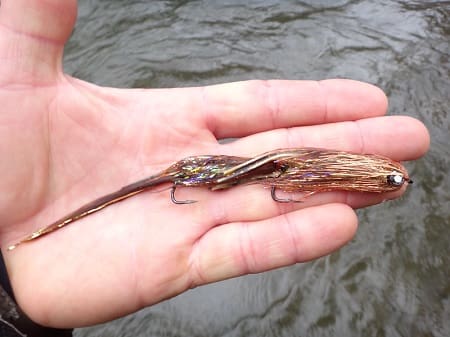
Traditional streamer hooks suck!
Yep, you heard me. They are long, but the hook gap on them is small, and often, the gap will get smaller once you add all that bulky body fly-tying material to it.
My advice to you is to go with a larger gap, more modern streamer hook, and I promise you will miss fewer fish.
Consider these streamer hooks.
For simple Wooly Buggers, Zonkers, and more traditional streamer patterns that don’t require such a large hook gap, I use Daiichi 1750 Straight Eye Streamer Hooks
For barbless streamer fly hooks, check out the Hanak Competition 970BL Streamer Wave Hooks.
Best Fly Tying Hooks For Egg Patterns
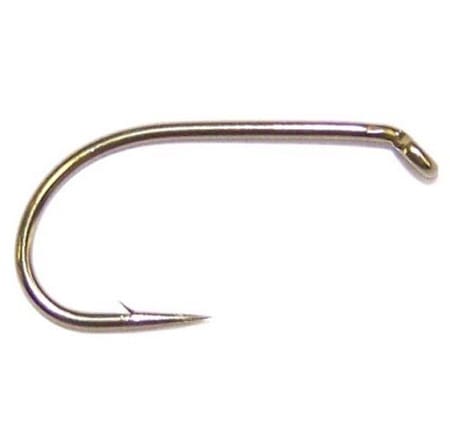
Whether you fish steelhead and salmon or trout, an egg pattern is hard to beat at times, and they should be in every river angler’s box.
You don’t need to get too in-depth just be sure you go with a shorter shank hook with a razor-sharp point and a wide gap.
The gape or “gap” is important because the fly-tying materials used for an egg pattern can clog up the gap on some hooks, which can prevent hooking the fish.
When tying egg patterns, I use:
- Raven Specimen hooks in sizes 8 to 12
- Daiichi 1510 Glo-Bug Hook
- Gamakatsu C14S Glo-Bug Hooks in 8 to 14
NOTE: This is the short version of this article. The full version includes:
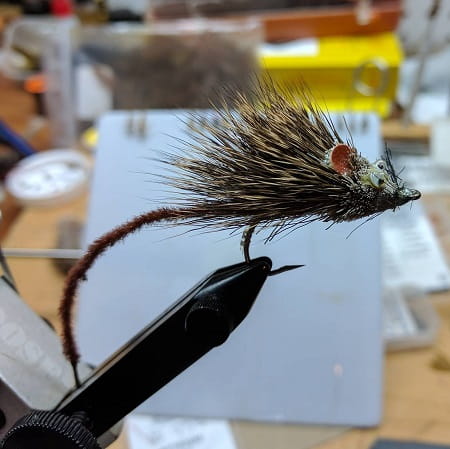
- What Makes A Good Fly Tying Hook
- Barbed Hooks VS. Barbless Hooks, Does It Matter
- Store Bought Flies And Cheap Hooks
- Hook Material and Construction
- Long or Short Hooks?
- Temper: Do you need to know?
- Types Of Hook Finishes
- What is the Ideal Size of Fly Tying Hooks?
- What is the Ideal Tying Hook?
- More About Fly Tying Hooks and Their Construction
- Hook Sizing and Gape
- FAQ
See the full article here
Related Articles:
If you have a question or some tips about fly tying hooks or you want to share your favorite hooks, let me know in the comments section below.
Tight Lines,
Graham

hey graham. what would you recommend as the best hook for worm pattern flies? specifically bead head squirmy worms. your expertise are much appreciated!
Hi Nakita,
I have done well with Daiichi 1150 or Raven Sedge hooks, size 8 and 10 for trout and great lakes steelhead. I’ve also used the Raven Specimen or Kamasan Specimen hooks for salmon and large steelhead, size 6 or 8.
Good Luck
Graham
Thank you for this very informative discussion on hooks. As a new fly tyer/fisherman, I was befuddled by the varying specs given to tie flies with my local fly-fishing club.
I’m glad you enjoyed the article Clyde. Keep tying.
Graham